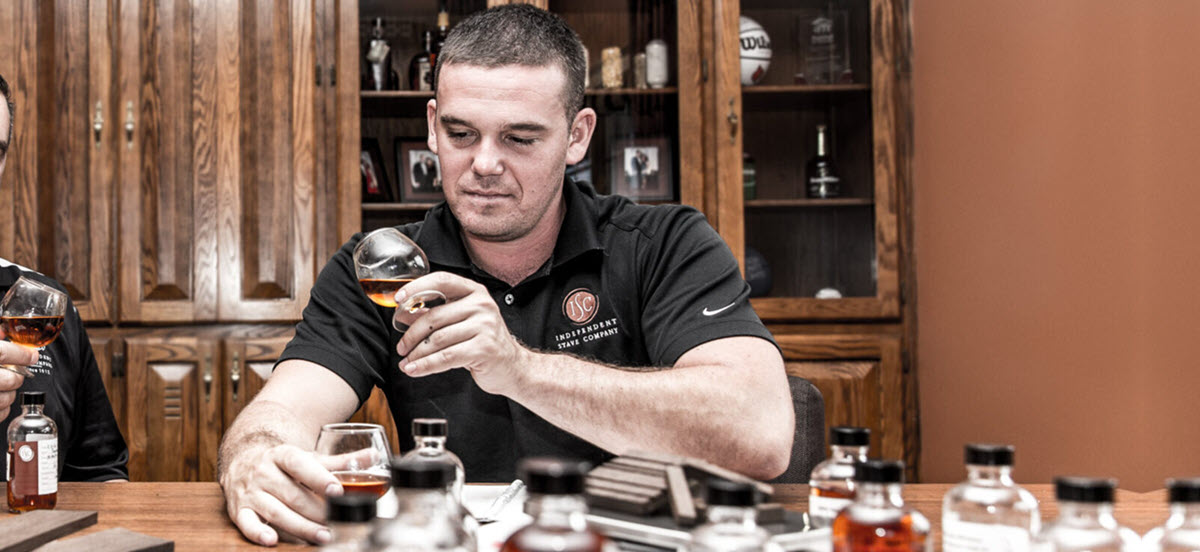
Visit a distillery anywhere in the world and you’ll likely hear your tour guide talk about the influence climate has on whiskey maturation. While there has been much speculation on the effects, I was not able to find any hard data or documentation of a proper barrel experiment aimed at studying this variable, so we at Independent Stave Company decided it was time to lay the groundwork and begin our own barrel experiment.
Nearly three years ago, we leveraged our world-class partnerships in the United States and Scotland to take a deeper dive into the effects that climate has on whiskey maturation. The good folks with Balcones Distilling in Waco, Texas, were kind enough to supply the liquid for the experiment and we at ISC produced thirty identical barrels to ship to each of the locations listed below for maturation.
The parameters were the same for each location- each received five barrels, and all barrels were to be stored on the first floor of non-conditioned barrel warehouses for four years at their respective site. The only challenge was waiting four years to tap into the barrels!
2-Year Results of our 4-Year Climate Study
Anxious to see the results we decided to pull samples from the barrels after only two years. All five-barrel composite samples from each location were shipped to our Research Center in Lebanon, Kentucky for analysis. Here are what things looked like after the first two years of maturation.
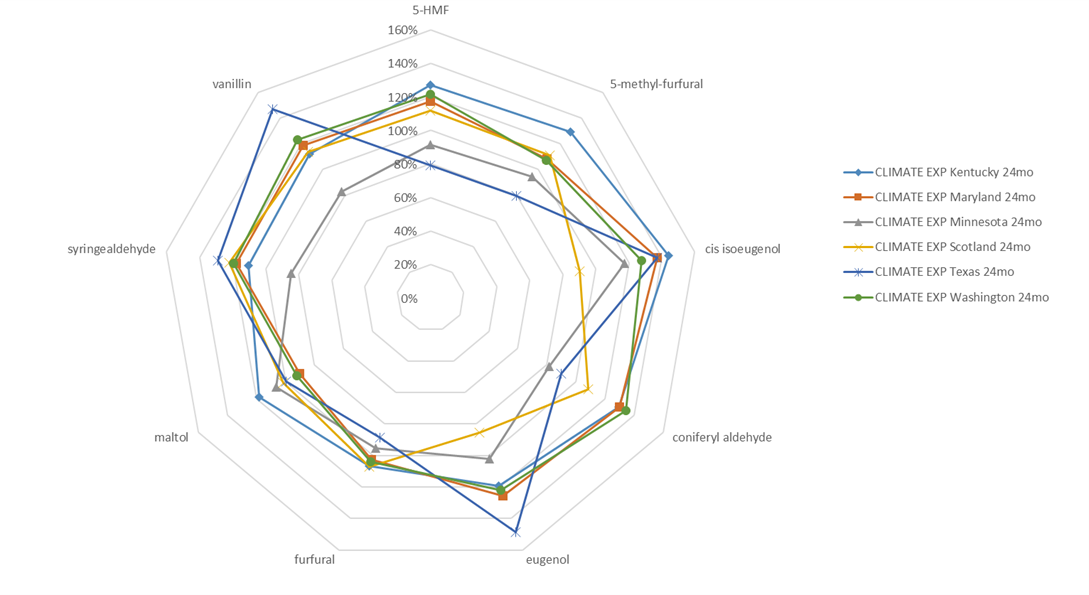
The graph above represents the flavor extractive concentrations discovered across all locations participating in the study. By adding up those concentrations, we noted that the highest extraction locations after two years were Kentucky and Washington- with Kentucky having a slightly higher overall extractive concentration. The barrels stored in Minnesota showed a lesser overall extraction while Scotland, Texas and Maryland were the median.
As all dedicated bourbon lovers know, 95% of the world’s bourbon is produced in the Bluegrass State. For that reason, I chose to look closer at the samples rested in Kentucky against the samples stored in Texas, Minnesota and Scotland as represented in Figure 2, Figure 3, and Figure 4 below.
Kentucky v. Texas Barrel Maturation
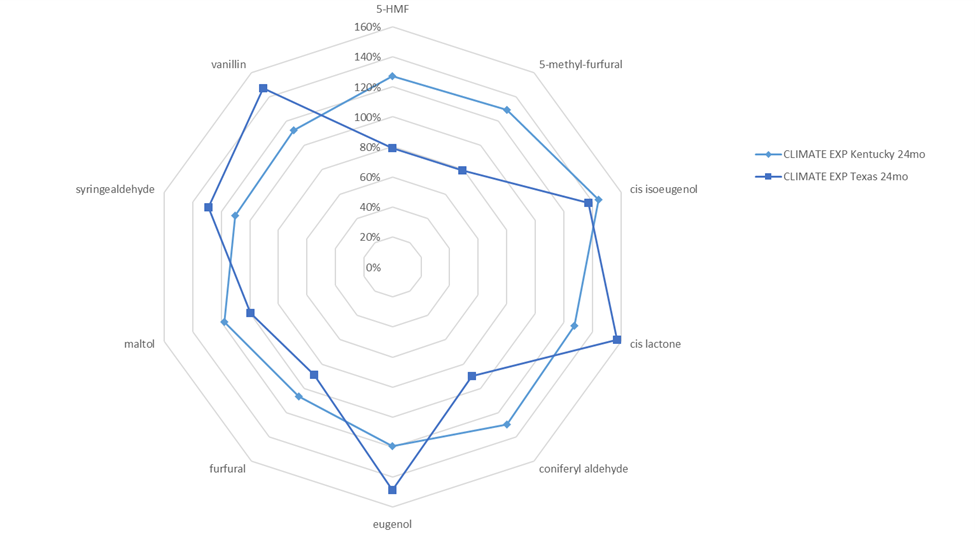
The liquid from the two-year old Kentucky barrels showed higher concentrations in furans while the Texas barrels displayed higher concentrations of the lignin degradation components. This leads me to postulate the Texas heat is pushing the whiskey further back into the red layer where compounds like vanillin reside and pushing the furans, that are more abundant closer to the surface of the stave deeper in, causing their concentration in the liquid to decrease while the vanillin increases.
Kentucky v. Minnesota Barrel Maturation
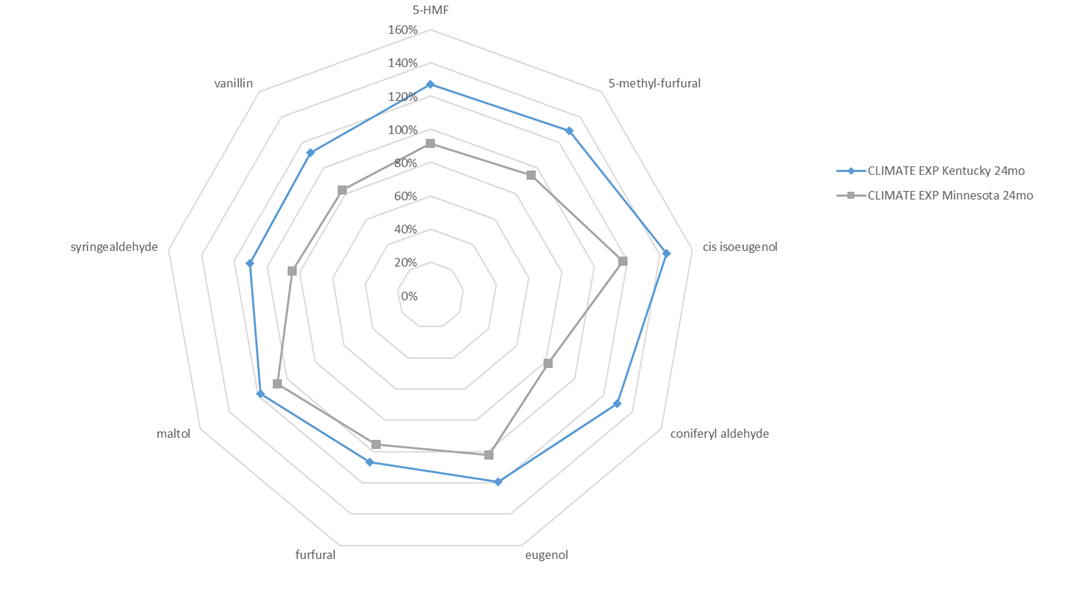
The above graph shows that both the Minnesota samples and the Kentucky samples are gaining many of the same compounds; however, the overall extractive concentration of the Minnesota barrels is approximately fifteen percent lower at the two-year mark.
Kentucky v. Scotland Barrel Maturation
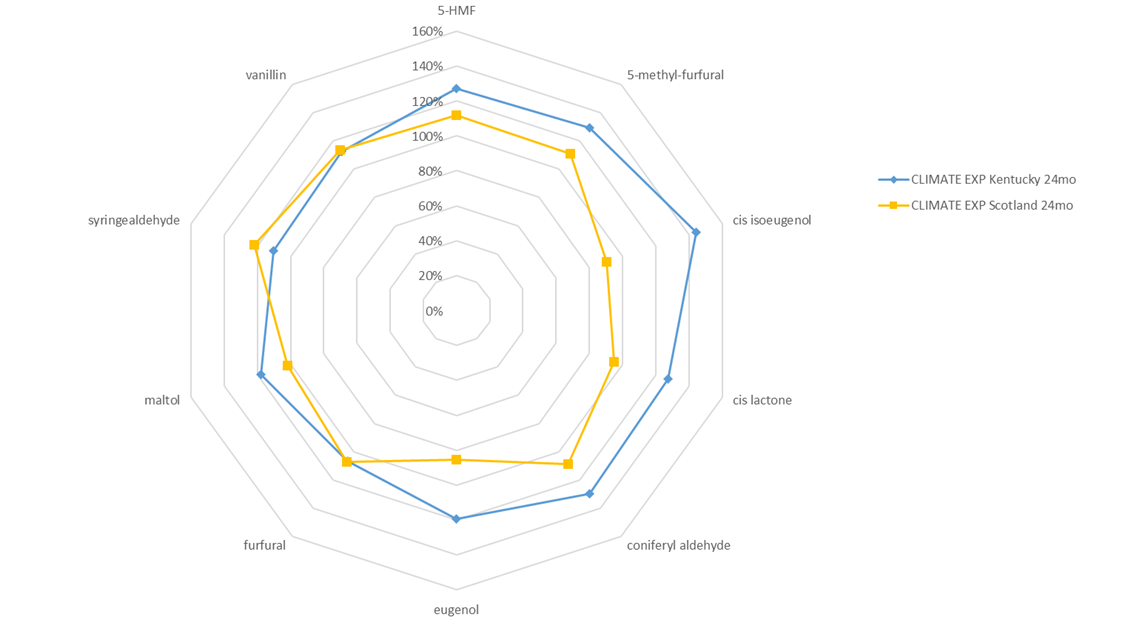
It’s not uncommon for us bourbon enthusiasts to compare facets of American whiskey to that of Scotch whisky. For that reason, I find the comparison between the liquid matured in the Kentucky barrels against the Scotland barrels to be quite fascinating. To be honest, even I was a little surprised with the results represented in the figure above. For no other reason than speculation, I was expecting the results to be further apart. Having said that, we still have some significant differences in the extraction curves between Kentucky and Scotland.
We’ll continue our research as the barrels stored at these locations become fully matured at four years and share the conclusions surmised from the data. We might even share some interesting facts we learn from an adjacent experiment in another bourbon warehouse here in Kentucky. Stay tuned!
Related Stories
Part 1: Independent Stave Co. Barrel Warehouse Experiment – Year-1 Results of a 4-Year Study on Heat & Humidity by Floor
Part 2: Independent Stave Co. Barrel Warehouse Experiment – Year-3 Results of a 4-Year Study on Heat & Humidity by Floor
What is BrandScape? BrandScape is a way for product and service suppliers to talk directly to our audience. If you would like to learn more about BrandScape, please email Info@DistilleryTrail.com.
Please help to support Distillery Trail. Sign up for our Newsletter, like us on Facebook and follow us on Instagram and Twitter.




